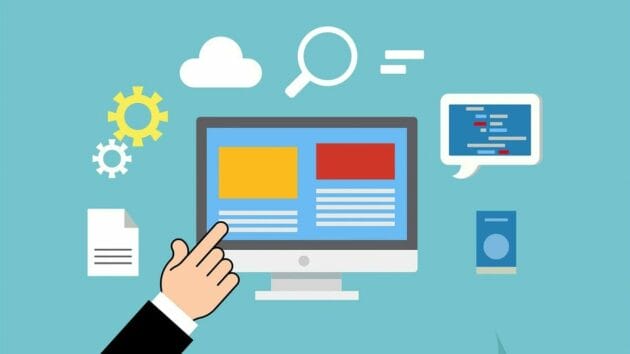Designing for accessibility is not just a legal requirement or a moral obligation. It’s an opportunity to create better experiences for everyone. In this article, we will discuss some key principles and best practices for designing accessible digital products.
The ultimate goal of digital product designers is to create products that are not only visually appealing but also user-friendly and accessible to all. In today’s increasingly connected world, it is more important than ever to ensure that our designs cater to the needs of users with varying abilities. That is why leading designers, studios, and agencies are implementing accessible design solutions in their products.
What is Accessibility?
Accessibility, in the context of digital product design, refers to the practice of creating products and experiences that can be used by people with a wide range of abilities, including those with disabilities. The goal of accessible design is to ensure that everyone has an equal opportunity to access and interact with digital content, regardless of their physical, cognitive, or sensory abilities.
At its core, accessibility is about inclusivity and embracing the diversity of human abilities. It acknowledges that people have different needs and preferences when it comes to using digital products. It seeks to provide solutions that cater to these diverse requirements.
Accessibility encompasses various aspects of digital product design. One of them is visual design. This involves ensuring that text, images, and other visual elements are easy to see and comprehend for users with visual impairments, color blindness, or low vision. Another aspect is auditory design. This includes providing transcripts, captions, and alternative audio descriptions for multimedia content to accommodate users with hearing impairments or those who prefer to access content through reading.

Interaction design is another crucial part of accessibility. This involves making sure that digital products are compatible with different input methods, such as keyboard navigation, voice commands, and assistive technologies like screen readers and eye-tracking devices.
Finally, cognitive design is an essential component of accessibility. It focuses on designing content and user interfaces that are easy to understand and use for people with cognitive disabilities, such as attention deficit disorder, autism spectrum disorders, and dyslexia.
Related: Understanding the Importance of Website Accessibility.
Why is Designing for Accessibility Important?
Designing for accessibility is essential for several reasons. It ranges from ethical considerations and social responsibility to legal compliance and business benefits. Here are some of the main reasons why accessibility should be a priority in digital product design:
1. Increased Audience Reach:
By designing for accessibility, you can cater to a broader audience, including the estimated 16% of the global population who have some form of disability. This not only helps you tap into a larger market but also demonstrates your commitment to inclusivity and social responsibility.
2. Legal Compliance:
Many countries have laws and regulations that require digital products to be accessible to people with disabilities. In the United States, for example, Section 508 of the Rehabilitation Act requires federal agencies and their contractors to make their electronic and information technology accessible to people with disabilities. Similarly, the European Union has adopted the Web Content Accessibility Guidelines as the standard for digital accessibility. By designing for accessibility, you can ensure that your digital products comply with these legal requirements and avoid potential lawsuits or penalties.
3. Competitive Advantage:
As awareness of accessibility grows, consumers are increasingly demanding that businesses prioritize inclusivity in their digital products. By proactively addressing accessibility in your designs, you can differentiate yourself from competitors and position your brand as a leader in inclusive design.

4. Improved Usability:
Accessible design principles often result in better overall usability for all users, not just those with disabilities. For example, providing clear and consistent navigation, using simple language, and ensuring that content is easy to read and understand benefits everyone, regardless of their abilities.
“Accessibility design is not just about making sure everyone can use a product, it is about creating a better experience for everyone.” – as quoted by Kirill Lazarev, the founder, and CEO of LAZAREV., in one of his recent interviews.
5. Social Responsibility:
Designing for accessibility is a matter of social responsibility and ethical business practice. By ensuring that your digital products are accessible to all users, you demonstrate a commitment to equality and inclusivity, which can enhance your brand’s reputation and customer loyalty.
6. Innovation and Creativity:
Addressing accessibility challenges often requires innovative solutions and creative problem-solving. By embracing accessibility in your design process, you can foster a culture of innovation and push the boundaries of what’s possible in digital product design.
Principles of Accessible Design
The Web Content Accessibility Guidelines (WCAG) provide a comprehensive framework for designing accessible digital products. The WCAG is organized around four core principles, which can be summarized as follows:
- Perceivable: Users must be able to perceive the information being presented, regardless of their sensory abilities.
- Operable: Users must be able to navigate and interact with the interface using a variety of input methods.
- Understandable: Users must be able to understand the information being presented and how to use the interface.
- Robust: The content must be accessible across various devices, platforms, and assistive technologies.

By keeping these principles in mind throughout the design process, you can create digital products that are more inclusive and user-friendly.
See also: How to Use Web Design and Content Optimization for User Engagement?
Best Practices for Designing Accessible Digital Products
Here are some practical tips and strategies for incorporating accessibility into your digital product design process:
1. Start with an Accessible Foundation
When designing a new digital product, it’s important to start with a solid foundation that prioritizes accessibility. This includes selecting an accessible framework or platform, as well as choosing a color palette and typography that meet WCAG guidelines for contrast and legibility.
2. Use Semantic HTML
Semantic HTML is essential for creating accessible digital products. By using appropriate HTML elements and attributes, you can provide additional context and meaning to your content, making it easier for screen readers and other assistive technologies to interpret.
3. Design Clear and Consistent Navigation
Users with disabilities often rely on consistent navigation patterns to help them quickly and easily find their way around a digital product. To ensure your navigation is accessible, make sure to:
- Use clear, descriptive labels for menu items and buttons;
- Provide multiple ways for users to navigate (e.g., a site map, breadcrumb navigation, and search functionality);
- Ensure navigation elements are keyboard-accessible.
4. Consider Different Input Methods
Users with disabilities may rely on a variety of input methods to interact with digital products, including keyboard navigation, voice commands, or specialized assistive technologies like screen readers or eye-tracking devices. When designing your digital products, be sure to consider these alternative input methods and ensure that your interface is compatible with them.
For example, make sure all interactive elements are keyboard-accessible. Provide clear focus indicators to help users navigate your site or app using only a keyboard. Additionally, ensure that your product is compatible with popular screen readers and other assistive technologies by following best practices for coding and markup.

5. Design for Different Cognitive Abilities
Cognitive disabilities, such as attention deficit disorder, autism spectrum disorder, and dyslexia, can impact a person’s ability to process information and interact with digital products. To design for users with varying cognitive abilities, consider the following strategies:
- Use clear and simple language, avoiding complex terminology and jargon.
- Break up content into smaller, manageable chunks, using headings and subheadings to provide a clear hierarchy of information.
- Provide visual cues and support, such as icons, images, and diagrams, to help users understand the content more easily.
- Offer customizable settings, such as the ability to adjust text size or background color, to accommodate different reading preferences and needs.
6. Ensure Your Forms are Accessible
Forms can be particularly challenging for users with disabilities. So it’s important to ensure they are designed with accessibility in mind. This includes:
- Using clear, descriptive labels for form fields.
- Grouping related form fields using fieldsets and legends.
- Providing clear error messages and instructions for correcting input errors.
7. Test Your Designs with Real Users
Once you have implemented accessibility features in your digital product, it’s important to validate your designs to ensure they meet established accessibility guidelines and standards, such as the WCAG. You can use automated tools, such as accessibility checkers and validator services, to identify potential issues in your code or design.
However, keep in mind that automated tools may not catch all accessibility issues. It’s essential to supplement these tools with manual testing and expert evaluations to ensure your digital products are truly accessible. One of the most effective ways to ensure your digital products are accessible is to test them with real users who have disabilities. This can help you identify potential issues that may not be apparent through other evaluation methods.
Moreover, accessibility is an ongoing process, not a one-time task. Continuously improve your designs by staying informed about the latest accessibility guidelines, trends, and technologies, and be open to feedback from users with disabilities.
Related: In-House Web Design vs Freelancer vs Agency: A Complete Guide.
Conclusion

Designing for accessibility is an essential aspect of digital product design. By following the principles and best practices outlined in this article, you can create more inclusive and user-friendly experiences that cater to the needs of a diverse range of users. Remember, designing for accessibility is not just a legal requirement or moral obligation. It’s an opportunity to create better experiences for everyone.





